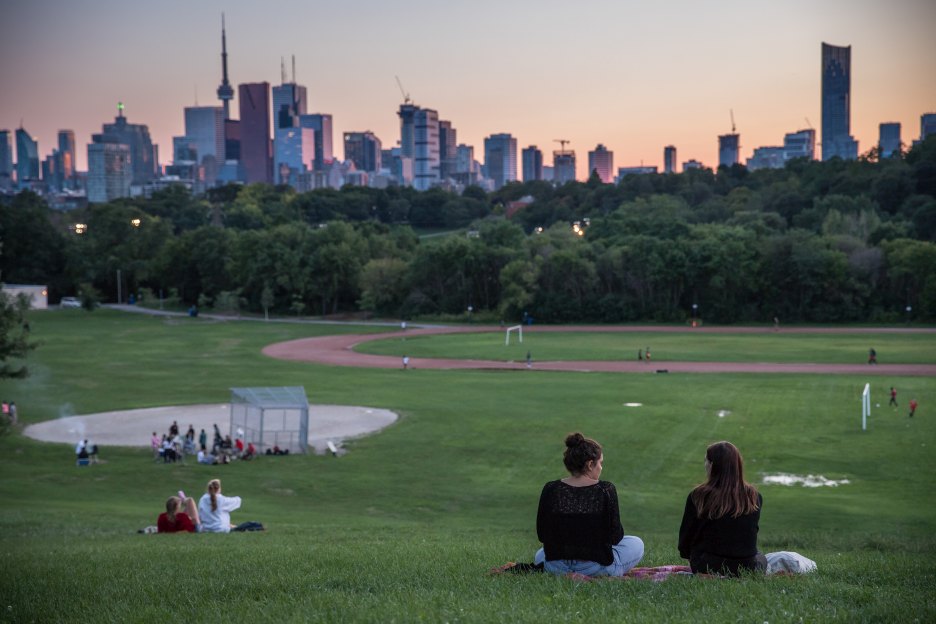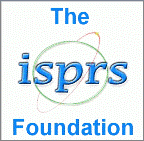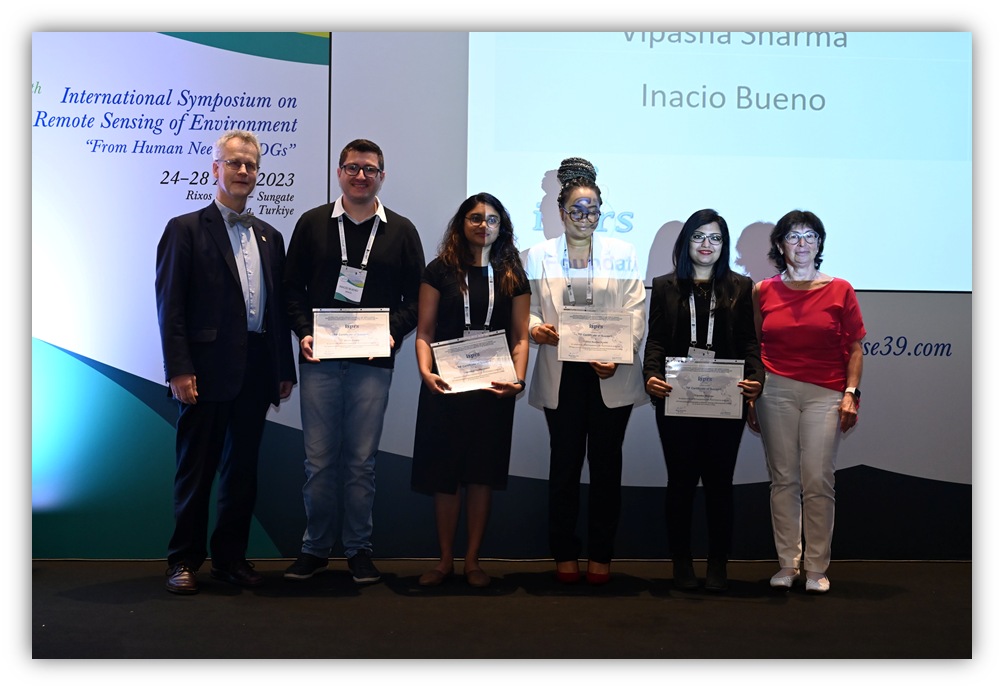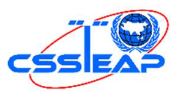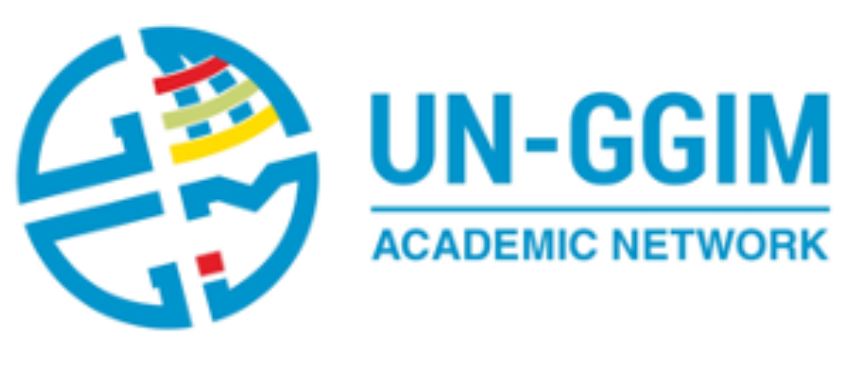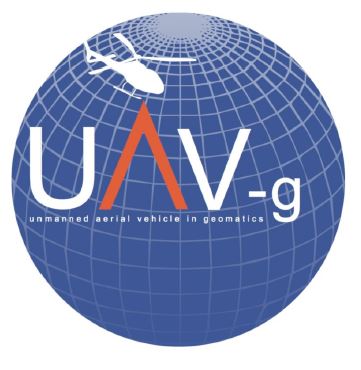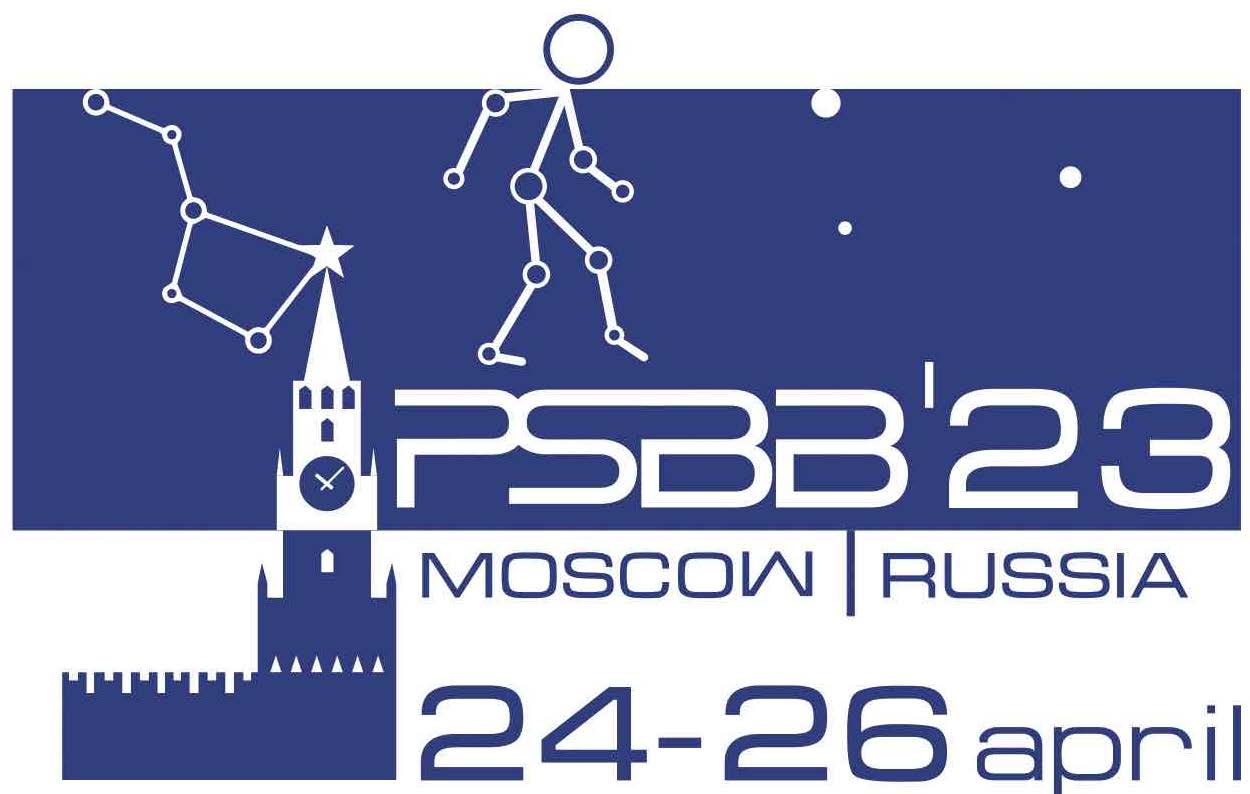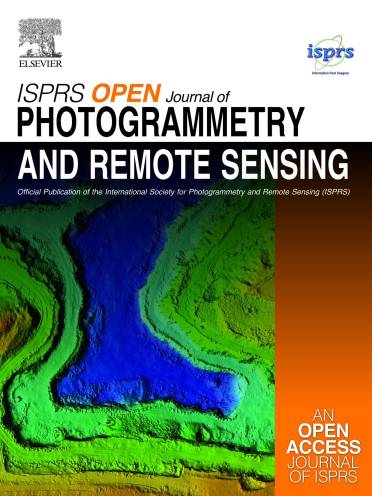Classification of Spatial Objects with the Use of Graph Neural Networks
Kaczmarek, Iwona, Iwaniak, Adam, Świetlicka, Aleksandra
No: 83
A Self-Error-Correction-Based Reversible Watermarking Scheme for Vector Maps
Qiu, Yinguo, Sun, Jiuyun, Zheng, Jiaojue
No: 84
Identifying Hazardous Crash Locations Using Empirical Bayes and Spatial Autocorrelation
Mekonnen, Anteneh Afework, Sipos, Tibor, Krizsik, Nóra
No: 85
Coastal Flooding Hazard, Exposure, and Readiness of Buildings in Hong Kong in 2080–2100, and the Implications for Real Estate Management
Singh, Minerva, Cai, Xin
No: 86
Geostatistics on Real-Time Geodata Streams—An Extended Spatiotemporal Moran’s I Index with Distributed Stream Processing Technologies
Lemmerz, Thomas, Herlé, Stefan, Blankenbach, Jörg
No: 87
Using Large-Scale Truck Trajectory Data to Explore the Location of Sustainable Urban Logistics Centres—The Case of Wuhan
Jiao, Hongzan, Yang, Faxing, Xu, Shasha, Huang, Shibiao
No: 88
HexTile: A Hexagonal DGGS-Based Map Tile Algorithm for Visualizing Big Remote Sensing Data in Spark
Yao, Xiaochuang, Yu, Guojiang, Li, Guoqing, Yan, Shuai, Zhao, Long, Zhu, Dehai
No: 89
Point Cloud Data Processing Optimization in Spectral and Spatial Dimensions Based on Multispectral Lidar for Urban Single-Wood Extraction
Shi, Shuo, Tang, Xingtao, Chen, Bowen, Chen, Biwu, Xu, Qian, Bi, Sifu, Gong, Wei
No: 90
Spatiotemporal Optimization for the Placement of Automated External Defibrillators Using Mobile Phone Data
Zhang, Jielu, Mu, Lan, Zhang, Donglan, Rajbhandari-Thapa, Janani, Chen, Zhuo, Pagán, José A., Li, Yan, Son, Heejung, Liu, Junxiu
No: 91
Two Decades of Land-Use Dynamics in an Urbanizing Tropical Watershed: Understanding the Patterns and Drivers
Wiwoho, Bagus Setiabudi, Phinn, Stuart, McIntyre, Neil
No: 92
Learning from Accidents: Spatial Intelligence Applied to Road Accidents with Insights from a Case Study in Setúbal District, Portugal
Nogueira, Pedro, Silva, Marcelo, Infante, Paulo, Nogueira, Vitor, Manuel, Paulo, Afonso, Anabela, Jacinto, Gonçalo, Rego, Leonor, Quaresma, Paulo, Saias, José, Santos, Daniel, Gois, Patricia
No: 93
Analysing River Systems with Time Series Data Using Path Queries in Graph Databases
Bollen, Erik, Hendrix, Rik, Kuijpers, Bart, Soliani, Valeria, Vaisman, Alejandro
No: 94
The Think-Aloud Method for Evaluating the Usability of a Regional Atlas
Vanicek, Tomas, Popelka, Stanislav
No: 95
Detecting Urban Commercial Districts by Fusing Points of Interest and Population Heat Data with Region-Growing Algorithms
Zhao, Bingbing, He, Xiao, Liu, Baoju, Tang, Jianbo, Deng, Min, Liu, Huimin
No: 96
Progressive Geological Modeling and Uncertainty Analysis Using Machine Learning
Li, Hong, Wan, Bo, Chu, Deping, Wang, Run, Ma, Guoxi, Fu, Jinming, Xiao, Zhuocheng
No: 97
A Novel Approach for Spatially Controllable High-Frequency Forecasts of Park Visitation Integrating Attention-Based Deep Learning Methods and Location-Based Services
Lu, Ming, Xie, Qian
No: 98
Validation of Recent DSM/DEM/DBMs in Test Areas in Greece Using Spirit Leveling, GNSS, Gravity and Echo Sounding Measurements
Grigoriadis, Vassilios N., Andritsanos, Vassilios D., Natsiopoulos, Dimitrios A.
No: 99
Graph Neural Network for Traffic Forecasting: The Research Progress
Jiang, Weiwei, Luo, Jiayun, He, Miao, Gu, Weixi
No: 100
Developing a Model to Express Spatial Relationships on Omnidirectional Images for Indoor Space Representation to Provide Location-Based Services
Claridades, Alexis Richard C., Kim, Misun, Lee, Jiyeong
No: 101
Residents’ Experiential Knowledge and Its Importance for Decision-Making Processes in Spatial Planning: A PPGIS Based Study
Bąkowska-Waldmann, Edyta
No: 102
An Automatic Derivation Method for Creation of Complex Map Symbols in a Topographic Map
Yang, Jiannan, Yin, Yong, Fang, Dengmao, Zheng, Fengjiao
No: 103
Exploring Historical Australian Expeditions with Time-Layered Cultural Maps
Yu, Feiyan, Champion, Erik, McMeekin, David
No: 104
Assessment of a Dynamic Physically Based Slope Stability Model to Evaluate Timing and Distribution of Rainfall-Induced Shallow Landslides
Thomas, Juby, Gupta, Manika, Srivastava, Prashant K., Petropoulos, George P.
No: 105
Model and Data Integrated Transfer Learning for Unstructured Map Text Detection
Zhai, Yanrui, Zhou, Xiran, Li, Honghao
No: 106
Estimating Daily NO2 Ground Level Concentrations Using Sentinel-5P and Ground Sensor Meteorological Measurements
Cedeno Jimenez, Jesus Rodrigo, Pugliese Viloria, Angelly de Jesus, Brovelli, Maria Antonia
No: 107
Method for Applying Crowdsourced Street-Level Imagery Data to Evaluate Street-Level Greenness
Zheng, Xinrui, Amemiya, Mamoru
No: 108
Spatial Non-Stationarity of Influencing Factors of China’s County Economic Development Base on a Multiscale Geographically Weighted Regression Model
Huang, Ziwei, Li, Shaoying, Peng, Yihuan, Gao, Feng
No: 109
Skyline-Based Sorting Approach for Rail Transit Stations Visualization
Cai, Zhi, Liu, Fangzhe, Qi, Qiong, Su, Xing, Guo, Limin, Ding, Zhiming
No: 110
Analysis of the Spatial Distribution and Associated Factors of the Transmission Locations of COVID-19 in the First Four Waves in Hong Kong
Yang, Daping, Shi, Wenzhong, Yu, Yue, Chen, Liang, Chen, Ruizhi
No: 111
GeoGraphVis: A Knowledge Graph and Geovisualization Empowered Cyberinfrastructure to Support Disaster Response and Humanitarian Aid
Li, Wenwen, Wang, Sizhe, Chen, Xiao, Tian, Yuanyuan, Gu, Zhining, Lopez-Carr, Anna, Schroeder, Andrew, Currier, Kitty, Schildhauer, Mark, Zhu, Rui
No: 112
HGST: A Hilbert-GeoSOT Spatio-Temporal Meshing and Coding Method for Efficient Spatio-Temporal Range Query on Massive Trajectory Data
Liu, Hong, Yan, Jining, Wang, Jinlin, Chen, Bo, Chen, Meng, Huang, Xiaohui
No: 113
Correction: Li et al. How Has the Recent Climate Change Affected the Spatiotemporal Variation of Reference Evapotranspiration in a Climate Transitional Zone of Eastern China? ISPRS Int. J. Geo-Inf. 2022, 11, 300
Li, Meng, Chu, Ronghao, Sha, Xiuzhu, Islam, Abu Reza Md. Towfiqul, Jiang, Yuelin, Shen, Shuanghe
No: 114
Analysis and Visualization of Vessels’ RElative MOtion (REMO)
Ban, Hyowon, Kim, Hye-jin
No: 115
Increasing Efficiency of Nautical Chart Production and Accessibility to Marine Environment Data through an Open-Science Compilation Workflow
Kastrisios, Christos, Dyer, Noel, Nada, Tamer, Contarinis, Stilianos, Cordero, Jose
No: 116
Efficient Trajectory Clustering with Road Network Constraints Based on Spatiotemporal Buffering
Hussain, Syed Adil, Hassan, Muhammad Umair, Nasar, Wajeeha, Ghorashi, Sara, Jamjoom, Mona M., Abdel-Aty, Abdel-Haleem, Parveen, Amna, Hameed, Ibrahim A.
No: 117
Provenance in GIServices: A Semantic Web Approach
Wu, Zhaoyan, Li, Hao, Yue, Peng
No: 118
Does Time Smoothen Space? Implications for Space-Time Representation
Sang, Neil
No: 119
Spatial Pattern Evolution and Influencing Factors of Tourism Flow in the Chengdu–Chongqing Economic Circle in China
Chen, Xuejun, Huang, Yang, Chen, Yuesheng
No: 121
Filling in the Spaces: Compactifying Cities towards Accessibility and Active Transport
Monteiro, João, Para, Marvin, Sousa, Nuno, Natividade-Jesus, Eduardo, Ostorero, Carlo, Coutinho-Rodrigues, João
No: 120
Digitization, Visualization and Accessibility of Globe Virtual Collection: Case Study Jüttner’s Globe
Štefanová, Eva, Novotná, Eva, Čábelka, Miroslav
No: 122
Generating Gridded Gross Domestic Product Data for China Using Geographically Weighted Ensemble Learning
Xu, Zekun, Wang, Yu, Sun, Guihou, Chen, Yuehong, Ma, Qiang, Zhang, Xiaoxiang
No: 123
Remote Sensing-Based Yield Estimation of Winter Wheat Using Vegetation and Soil Indices in Jalilabad, Azerbaijan
Karimli, Nilufar, Selbesoğlu, Mahmut Oğuz
No: 124
Dynamic Fusion Technology of Mobile Video and 3D GIS: The Example of Smartphone Video
Zhu, Ge, Zhang, Huili, Jiang, Yirui, Lei, Juan, He, Linqing, Li, Hongwei
No: 125
An AR Map Virtual–Real Fusion Method Based on Element Recognition
Wang, Zhangang
No: 126
Dynamic Weighted Road Network Based Multi-Vehicles Navigation and Evacuation
Cai, Zhi, Wang, Tao, Mi, Qing, Su, Xing, Guo, Limin, Ding, Zhiming
No: 127
Leveraging Deep Convolutional Neural Network for Point Symbol Recognition in Scanned Topographic Maps
Huang, Wenjun, Sun, Qun, Yu, Anzhu, Guo, Wenyue, Xu, Qing, Wen, Bowei, Xu, Li
No: 128
Flood Monitoring in the Middle and Lower Basin of the Yangtze River Using Google Earth Engine and Machine Learning Methods
Wang, Jingming, Wang, Futao, Wang, Shixin, Zhou, Yi, Ji, Jianwan, Wang, Zhenqing, Zhao, Qing, Liu, Longfei
No: 129
Measuring Traffic Congestion with Novel Metrics: A Case Study of Six U.S. Metropolitan Areas
Seong, Jeong, Kim, Yunsik, Goh, Hyewon, Kim, Hyunmin, Stanescu, Ana
No: 130
Analysis of Spatial-Temporal Evolution Pattern and Its Influencing Factors of Warehouse Supermarkets in Liaoning Province
Huang, Hao, Li, Di, Han, Zenglin, Zhang, Hao, Wang, Hongye, Duan, Ye
No: 131
A Novel Lane Line Detection Algorithm for Driverless Geographic Information Perception Using Mixed-Attention Mechanism ResNet and Row Anchor Classification
Song, Yongchao, Huang, Tao, Fu, Xin, Jiang, Yahong, Xu, Jindong, Zhao, Jindong, Yan, Weiqing, Wang, Xuan
No: 132
Dynamic Visualization of VR Map Navigation Systems Supporting Gesture Interaction
Xiao, Weiye, Lv, Xiaolei, Xue, Chengqi
No: 133
Measuring and Mapping Physical Activity Disparity (PAD) Index Based on Physical Activity Environment for Children
Yang, Jue, Mu, Lan, Rajbhandari-Thapa, Janani
No: 134
Research on Urban Fire Station Layout Planning Based on a Combined Model Method
Yu, Zhijin, Xu, Lan, Chen, Shuangshuang, Jin, Ce
No: 135


